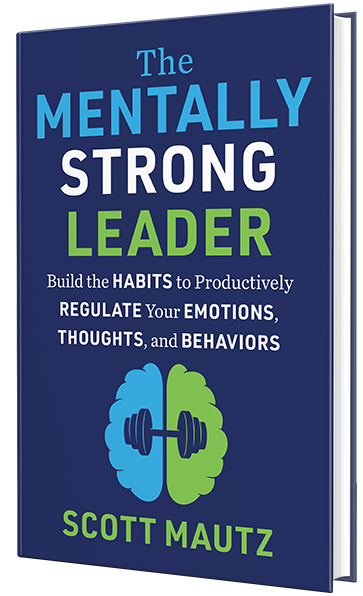
INSIGHTS (on leadership/self-leadership)
The first step to solving a problem is admitting you have one. Sounds simple enough. But as I share in my new book (May 7th) The Mentally Strong Leader, there’s a major problem that gets in the way, what I call, the Static Trap. That is:
• We can be static – denying a problem exists, doing nothing about it, until it can no longer be ignored.
• Then, we create static, or distortion, around the problem – by making excuses about why the problem exists, downplaying its impact, or redirecting attention by finger pointing.
• Then we remain static – i.e. not taking action even when we’ve admitted the problem exists, not putting energy into doing something about it.
You avoid the Static Trap by recognizing signs of problem-denial and moving quickly to admission/action mode. These signs include:
– Refusing to talk, or even think, about the problem, or continually putting it off
– Minimizing the negative impact to make it seem like less of a problem
– Justifying why the problem is happening to make it seem like less of a problem
– Blaming and finger pointing (denying any ownership of the problem)

IMPERFECTIONS (a mistake many make)
Here’s a dead-simple way to make improvements in your life and eliminate an easy-to-make mistake. Ask yourself, “Where can I be more consistent?”
Research shows being consistent in challenging yourself enhances productivity and well-being. Other research shows consistency improves trust. Still other studies indicate the importance of consistency in learning and skill development, and even that being inconsistent in sleep patterns effects performance and health. Setting the wealth of supporting research aside, you intuitively know that consistency increases momentum, builds discipline and willpower, drives accountability, enhances relationships, boosts accomplishment, and helps form habits.
So, I encourage you to be more consistent in finding opportunities for more consistency in your life.
IMPLEMENTATION (one research-backed strategy, tip, or tool)
Here’s a simple, proven tip for improving communication with someone or for fairly evaluating their actions or behaviors. Think of someone’s communications or actions as a flowing river, moving with intent and purpose towards a desired end. Don’t clutter that flow with your emotional debris. Don’t insert a bulky dam, injecting your assumptions and changing the path of where you believe the water is actually flowing. Relatedly then, remember the acronym DAM:
“Don’t Assume Motive.”
Instead assume positive intent. If for no other reason than research shows, in many contexts, we aren’t good at reading someone else’s motives. So, assume positive intent. Listen. Ask questions to understand, not to affirm a jaded point of view.




Leave a Reply